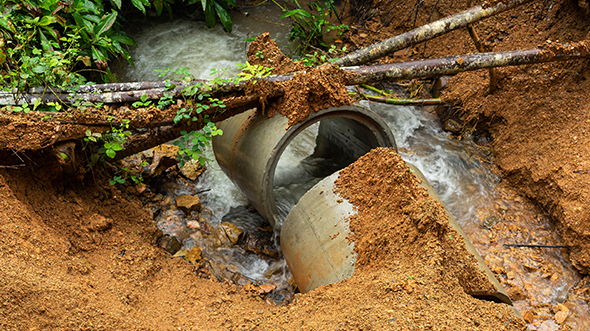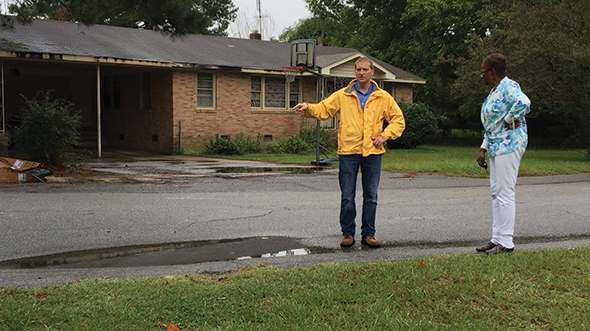
BLOG
—
New Year’s Resolution: Finding a Better Way
On Dec. 31, as 2020 drew to a close, I watched the rain come down. I knew that, across my community, drainage systems would become overwhelmed and roads would become impassable. Public works crews would end their year working in the cold rain rather than celebrating with their families, and many citizens would desperately watch the creek rise rather than watch the ball drop. All of this because, as a nation, we have neglected our stormwater infrastructure for decades. As a result, our infrastructure has deteriorated to the point of crisis.
Across the U.S., stormwater systems are at capacity and nearing structural failure. Nuisance flooding is becoming more prevalent, and road closures to repair failed pipes after large storm events are commonplace. I bet that even if you are not a public works official, you still know someone who constantly complains about “drainage” or a road that habitually closes with even a moderate rainfall. We can do better.
To find this better way, we have to start with a simple change in mindset. We all know the value of our water and sewer systems because we receive a bill each month directly aligned with the amount of water we use. This is not necessarily true for stormwater systems. Even in communities with stormwater utilities, we—as stormwater management professionals—have done a very poor job of educating our community leadership and citizenry on the value of a well-maintained stormwater system. Further, we have not educated people on the real cost of properly maintaining that system.
Many communities are not clear on how much stormwater infrastructure they own or where it is located. Even fewer know the condition of that infrastructure or the replacement value of the system. Capital improvement and operation and maintenance budgets are often set according to the previous year’s expenditures rather than the current year’s projected repair and replacement needs.
Individual expectations for how a drainage system will function vary significantly. Some expect a little flooding now and again, while others believe they shouldn’t even get their feet wet walking across a parking lot in a downpour. Community leaders are just as diverse in their expectations; some understand the design limitations of stormwater systems, while others think that drainage systems should be adequate to drain rainfall from a hurricane.
This better way involves the development of a risk-based, proactive approach to operating and maintaining our stormwater infrastructure. This is an asset management approach, which begins with an understanding of the location and condition of our pipes, inlets and other system components, and it continues by establishing realistic expectations for the system’s potential performance, or level of service. From this knowledge base, we can identify the critical components and the value and life cycle costs of operating the system. We can then develop sustainable and appropriate repair and replacement plans to support data-driven budgets.
Applying standard asset management principles to the operation of our stormwater systems leads to managed citizen expectations; sustainable, appropriate and defensible CIPs and O&M budgets; fewer emergency repairs; and a higher-functioning drainage system. We all need to press our local, state and federal political leaders to stop ignoring the condition of our infrastructure that sustains our economy and to give it the attention it deserves. My New Year’s resolution is to continue working with community engineers and public works staff to develop and implement a risk-based, asset management approach for stormwater infrastructure—and to be an ambassador for this much-needed, better way.



